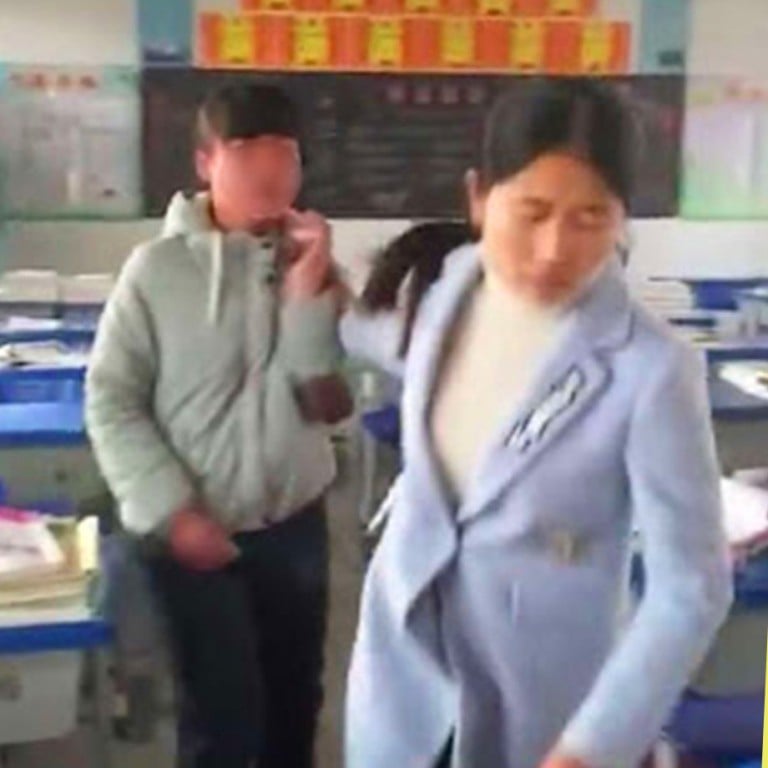
Explainer | China vs the West: what are the differences in their teaching styles? Post examines control and critical thinking in education
- In China, regimentation, respect for teachers, strict discipline are to fore
- Individuality, critical thinking, student participation mark Western classroom
Recent revelations about a teacher in China abusing one of her students in the classroom for unsatisfactory academic performance shocked mainland social media.
The news also prompted people to reflect on China’s teacher-centred approach to education.
Here, the Post examines teaching styles in mainland Chinese schools, their origins, and how they contrast with those in the West.
East and West
A typical Chinese classroom has dozens of students in school uniform, sitting quietly at lines of individual desks. Their interaction with the teacher in front of them is strictly one-way.
Teachers are given unparalleled authority and respect in the classroom.
Asking questions during the lecture is frowned upon and students usually expect their teacher to be correct about any given subject.

In comparison, Western schools encourage individual identity and creativity, critical thinking and participation.
In 2019, Chinese director and former war correspondent, Zhou Yijun, made a six-episode documentary, Childhood Elsewhere, which examines primary school styles in six European and Asian countries.
Many people said they were envious of the education system in Finland, which advocates equality and independence.
Road to success
Primary and secondary schools in China are rated according to their academic reputation and teaching resources, which many parents perceive as decisive factors when it comes to the chances of their children making it to a prestigious university and achieving life success.
As China limits the priority for enrolment in a public school to property owners in the school’s district, many parents buy houses near elite schools at inflated prices.
Parents also apply an extreme parenting style known as jiwa, or “chicken blood parents”, pressuring their children aggressively to ensure their competitiveness against peers.
Violence in the classroom
“Respect teachers and revere their teaching.”
This Confucian idiom that first appeared in the Book of the Later Han, written 1,600 years ago, has held as a truth for generations of Chinese students.
As a result, students habitually obey the teachers, and think it taboo to confront their teachers even when they make mistakes.
Indeed, in many cases where teachers physically or verbally abuse a student, the parents side with the teacher, believing the old saying, “Kids only grow after a good beating.”
In 2021, the Chinese Ministry of Education issued new regulations on student punishment in primary and secondary schools.
The regulations ban any form of verbal or physical abuse.
However, the regulations allow for “time-out” punishment, but for no longer than the duration of the class.
Critical thinking vs control
In recent years, affluent families in China increasingly favoured a Western school education, sending their children abroad or to international schools in China to cultivate their critical thinking skills at an early stage.

The average annual tuition fee of international schools in first-tier cities, which cover education from kindergarten to secondary school, is around 200,000 yuan (US$28,000), which is unaffordable to the majority of families in China.
Meanwhile, the Ministry of Education aimed to reduce the burden on students by implementing a “double reduction” policy that strictly limits the volume and difficulty of homework, and outlaws private or after-school tutoring.
However, many people said the policy only caused widening gaps in learning resources and outcomes among students from different backgrounds.

